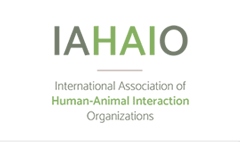Abstract
Through observations from ethnographic fieldwork the authors seek to highlight the significance of equine-human and canine-human communication to the fields of both human- animal studies and eudaimonia theories of human well-being. As we shared our insights through academic conversations about our respective research findings, we realized that both studies explore the enigmatic and significant concept of kinesthetic empathy in communication and relationship building between horses and young people and between dogs and young children. The canine-child setting (Study A) is a primary school and classroom in which the children voted to share their environment with a school dog, and the equine-adolescent setting (Study B) is an intervention program for young people experiencing social and emotional challenges because of being excluded from the mainstream education system. Observations revealed that the notion of kinesthetic empathy is apparent across species and plays a key role in the well-being of both animal and human. These observations are described and animated through rich descriptions from field notes and photographs taken from both settings. Both studies bring to light the significance of touch, movement, and attunement in human-animal communication to further add to this emerging field. Marrying these concepts together, as we have attempted here, could prove a major step forward in strengthening this field, as the need for robust methodologies is purported. This paper will be of interest to professionals across disciplines such as education, social work, health care, sociology, and human-animal studies.
Recommended Citation
Carlyle, Donna A. and Graham, Pamela
(2020)
"Bearing Witness to the Beauty of Enactive Kinesthetic Empathy across Species in Canine-Human and Equine-Human Interactions: Participant-Observation Ethnographies,"
People and Animals: The International Journal of Research and Practice: Vol. 3
:
Iss.
1,
Article 6.
Available at:
https://docs.lib.purdue.edu/paij/vol3/iss1/6
Included in
Animal Studies Commons, Community Health and Preventive Medicine Commons, Public Health Education and Promotion Commons


